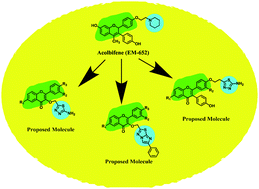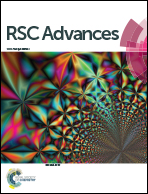Exploring the anti-breast cancer potential of flavonoid analogs†
Abstract
In the course of our search for new antitumor agents for breast cancer, novel flavone derivatives were synthesized, characterized and examined for their antitumor activities against breast cancer cell lines. In initial screening, analogs 7a [3-(5-amino-1,3,4-thiadiazol-2-yl)methoxy-2-phenyl-4H-chromen-4-one] and 7b [3-(5-amino-1,3,4-thiadiazol-2-yl)methoxy-2-(4-methoxyphenyl)-4H-chromen-4-one] were found to be effective against the estrogen receptor negative cell line (MDA-MB 453), which was followed by their evaluation in five dose assays. In addition, mechanistic studies of 7a and 7b were performed by cytometric analysis and electrophoretic studies and it was observed that apoptosis is a mechanism of cell death, confirmed morphologically by acridine orange/ethidium bromide double staining and TUNEL analysis. Further in vivo evaluation of the anti-tumor activity of compound 7a and 7b by Ehrlich Ascites Carcinoma (EAC) model and related studies confirms the anti-breast cancer potential of flavonoid analogs.


 Please wait while we load your content...
Please wait while we load your content...